A Video-Presentation of the Book "Conquest of the Seven Ysles of Canaria - Tomás Marín de Cubas - A Critical Edition by Antonio M. López Alonso"
Let us celebrate the World Book Day! (Video in Spanish)
https://www.youtube.com/watch?v=W8_-9j8Vka4…
Let us celebrate the World Book Day! (Video in Spanish)
https://www.youtube.com/watch?v=W8_-9j8Vka4…
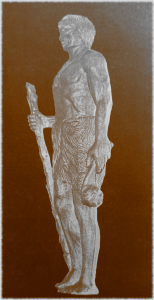
An idealized statue of Doramas by Grandcanarian sculptor Abraham Cárdenes (1907-1971) (source: MILLARES TORRES, A. et al. (1977 [1893]), Historia General de las Islas Canarias, vol. II, Las Palmas de Gran Canaria: EDIRCA, p. 178).
In our post devoted to Benahoarite chieftain Tanausu we pointed the importance of the ancient Canarian heroes in the building of the Archipelago’s folklore.
This value reaches a paradigmatic height in the case of Grandcanarian warrior Doramas by adding to the classic personal attributes of courage, abnegation and self-sacrifice, typical of a heroic model, that of the subject of humble origins determined to build his own destiny, who strives to ascend with his only effort along the social pyramid to which he belongs, while simultaneously facing the obstacles placed both by the status quo –an islander oligarchy determined to perpetuate itself in power through the instrument of lineage– and by forces other than internal social contradictions –European invaders–.
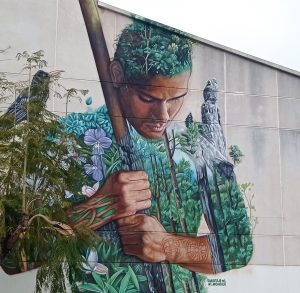
“Tanausú, Tierra y Nobleza” (Tanausu, Land & Nobility) (2016), an idealized picture embellishing the facade of Casa de la Cultura Braulio Martín Hernández in El Paso (La Palma), a work by Lanzarote-born muralist Matías Mata, nicknamed Sabotaje al Montaje (source: PROYECTO TARHA).
For La Palma, our Benahoare, nowadays in such a need of strength and courage.
In the traditional historical memory of the Canaries, individuals belonging to the precolonial island societies who faced the European Conquest with the technological and numerical disadvantage inherent to their way of life, environment, material resources and demographics who sometimes chose to sacrifice their own lives rather than surrender are bestowed the role of true people’s heroes regardless of whether the referred subjects enjoyed any sort of privileged social status.
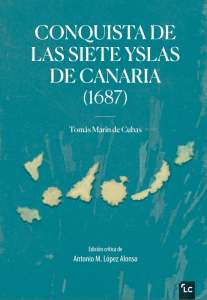 PLEASE FIND BELOW SOME LINKS TO MEDIA INTERVIEWS ON THIS BOOK.
PLEASE FIND BELOW SOME LINKS TO MEDIA INTERVIEWS ON THIS BOOK.
EXPLANATORY NOTE: Due to some incoming enquiries, we must stress as indicated in this post that ours is not a reissue of the 1694 copy-manuscript by Marín de Cubas, but the first edition of his 1687 unpublished manuscript.
We are very pleased to announce the publication in LeCanarien Ediciones of our second printed work; the first and long-awaited edition of one of the fundamental works for the knowledge of the ancient history of our Archipelago: CONQUEST OF THE SEVEN YSLES OF CANARIA by Canarian physician and historian Tomás Marín de Cubas.
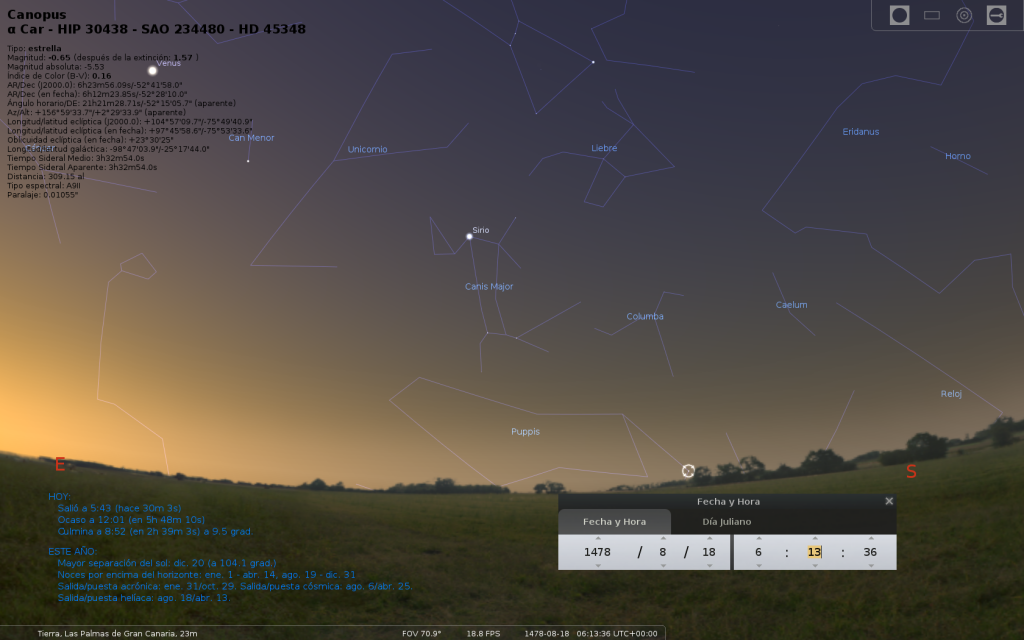
Canopus’ heliacal rising simulation (circle right above the horizon) in 1478 seen from the coordinates of modern Las Palmas de Gran Canaria city. Simulation landscape does not correspond to the real location (source: PROYECTO TARHA).
In our previous post we showed two videosimulations of the solar eclipse that took place on April 29th, 1478. This time we shall discuss a piece of software used to perform those simulations: Stellarium.
Stellarium is multiplatform, free software which works as a planetarium. As such, we can use it to simulate the position of celestial bodies visible from any geographic location on Earth at a specific time and date, accurately enough even for astronomical events two or three millenniums before our Era, which makes it very valuable in the field of archaeoastronomy.
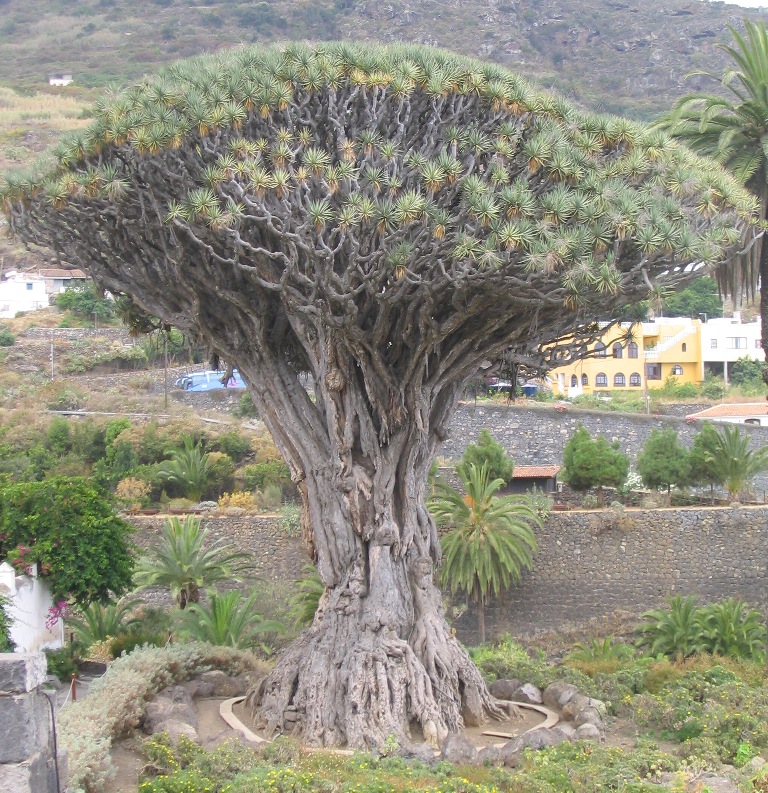
The famous dragon-tree at Icod de los Vinos, Tenerife. This tree-like plant (Dracaena draco) was used by ancient Canarians to make the shields that some authors called “tarjas” (fuente: Wikimedia Commons).
In more or less plausible relationship with the pintaderas cited in the first part of this post, ethnohistorical sources mention the use of badges or emblems among Gran Canaria indigenes. Let us quote some relevant texts.
From Antonio Sedeño‘s account:[1]MORALES (1978, pp. 367, 369). Translated from old Castilian by PROYECTO TARHA.
[…] they brought bucklers taller as a man, made of rough light wood from a tree called dragon. The sword they called Majido and the shield tarja; swords were thin and pointed; they brought their badges painted their way in white and ochre red over the bucklers, played the sword with great skill.
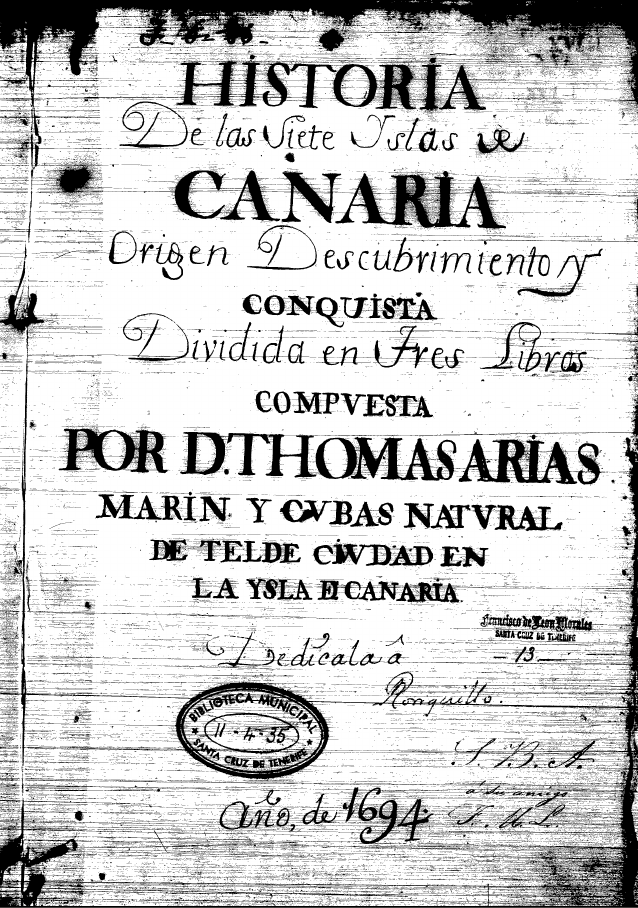
Microfilm image of the title page of the oldest surviving copy –18th century– of Historia de las Siete Yslas de Canaria (1694) by Tomás Marín de Cubas (source: Biblioteca Municipal Central de Santa Cruz de Tenerife, Ancient Collection, catalogue number Ms. 192)
UPDATED POST (2021/08/13)
[…] History by Marín de Cubas, when critically read, therefore constitutes a solid foundation for the knowledge of the prehispanic past of the Canary Islands.
Preface by Professor Juan Régulo Pérez for the 1986 edition of Historia de las siete islas de Canaria[1]ARIAS (1986), p. 28.. This translation by PROYECTO TARHA.
Despite its limited spreading, we are facing what is probably the most important surviving work on the world of the ancient Canarians, right after the work by Brother Juan de Abreu Galindo, even surpassing the latter regarding some key aspects.
Written by Dr. Tomás Marín de Cubas –or Marín y Cubas– (Telde, Gran Canaria, 1643 – Real de Las Palmas, Gran Canaria, 1704), who also holds the merit of being the collator of the oldest known copies of the accounts by Antonio Sedeño and Gómez Escudero, History of the Seven Ysles of Canaria is a work that never ceases to amaze researchers approaching to its pages for this opus provides us with interesting, previously unpublished data on the indigenes and some vivid accounts of known episodes of the Conquest showing that its author had access to information aside that in the other surviving writings dealing with the topic.